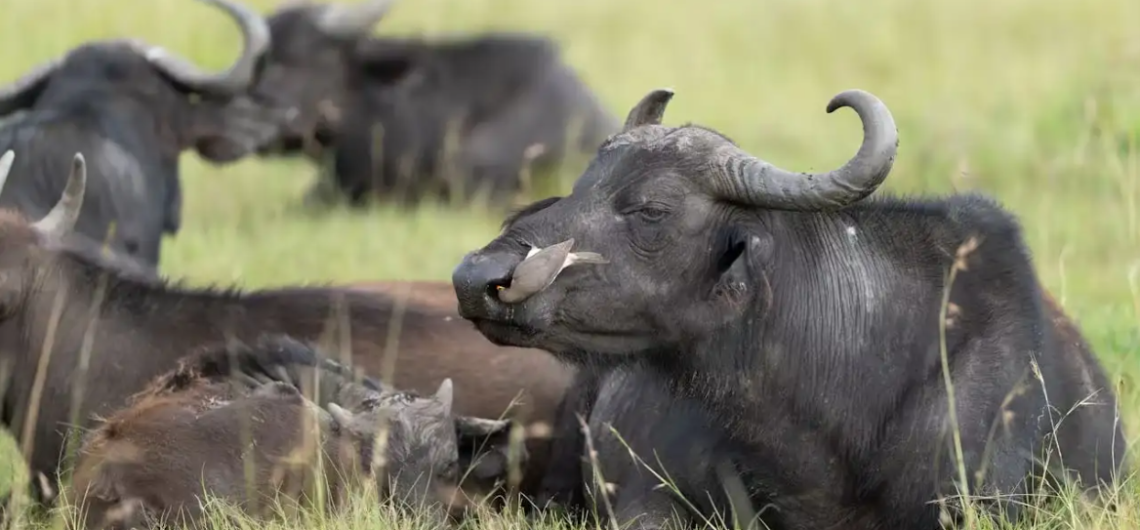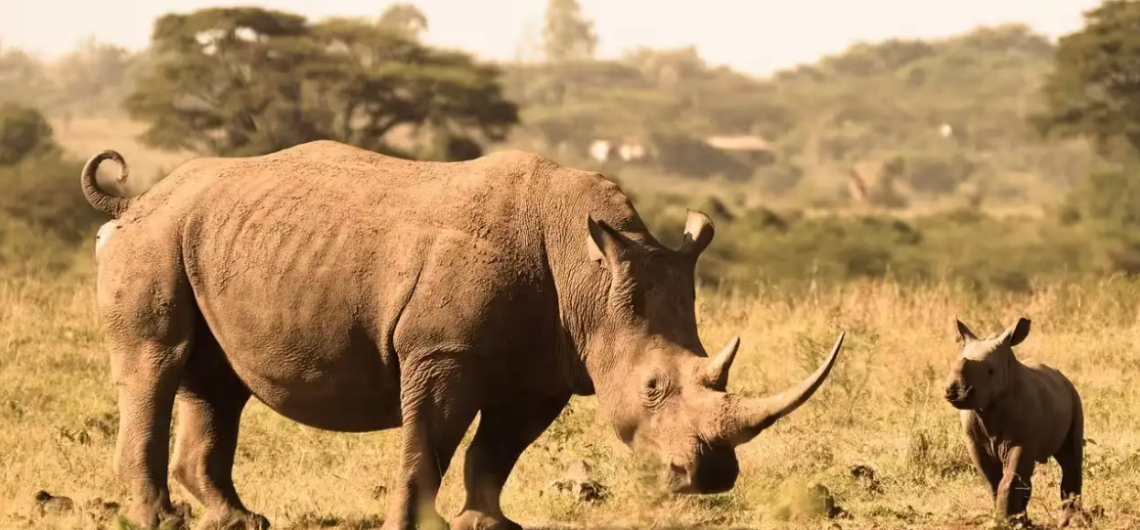Reading Time: 5minutes The African buffalo (syncerus caffer)is one of the big five animals in Africa. Learn about its habitat, size, behaviour, diet, and where to find them in Kenya. The African Buffalo The African Buffalo is one of the sub-Saharan African bovines. It is found across the African savanna and is mostly spotted grazing during the African safari tours, especially in some of the premier national parks in Kenya, from the famous Maasai Mara National Reserve to the little-known Meru National Park. The African buffalo, scientifically known as syncerus caffer, is closely related to the domesticated cow. The African buffalo is also related to other buffalo species like the Asian water buffalo, American bison, and domestic cattle. The African Buffalo has never been domesticated, unlike its other species, such as the wild yak and wild water buffalo. Its main predators are the lions, the spotted hyena, the Nile crocodile, and the African wild dog. The African Buffalo is most threatened by hunters hunting them for their skin and the shield-like horns. It is one of the big five animals in Africa, together with the African lion, the African Bush Elephant, the rhino, and the African leopard. African Buffalo.avif The size of the African Buffalo The African Buffalo is the largest among the bovines. It is approximately 1.0 to 1.3 m (3.3 to 5.6 ft) from the shoulder. The tail is 70 cm to 110 cm (28 to 43 in) long. The cape buffalo can weigh between 425 and 870 kgs( 937 and 1,918 lb). On the other hand, the African Forest Buffalo is smaller in size, measuring between 250 and 450 kgs, which is (600 to 1000 lb). The front part of the African Buffalo is heavier than the back, and for that reason, the front hooves are wider
The white Rhino Reading time:5 minutes 26 seconds Meta description: The white rhino, a member of the African Big Five, is also famously known as the white rhinoceros or the square-lipped rhinoceros. White rhinoceros The white rhino (Ceratotherium simum) is one of the largest species of rhinoceros; it is also the second largest mammal after the African Bush Elephant and the most social among the rhino species. The white rhino is known by its wide square lip, massive body size, and its gentle nature. White rhinos are not actually white as their name suggests, but the name is believed to be misinterpreted from the Afrikaans language word “wyd”, which means broad flat mouth, one of their characteristics. Serious efforts have been made by conservationists across the world to save the white rhino from being extinct in the world. The white rhinos suffer a serious threat from poaching and habitat loss. In Kenya, white rhinos are protected in national parks and some privately owned conservancies, where tourists can visit, see and learn about them.A Rhino in Lake Nakuru National Park.avif White rhino species There are only two subspecies of white rhinos in the world: The southern white rhino(Ceratotherium simum simum): this is the most common species of the white rhino, and it is found in several African countries such as Kenya, South Africa, Namibia and Zimbabwe. The Northern white rhino(Ceratotherium simum cottoni): this species is considered extinct, with only two females surviving in the world. The two female northern white rhinos named Najin and Fatu are found in Ol Pejeta Conservancy in Kenya. Scientists are working hard to try to save this species from extinction using some of the modern advanced reproductive technologies. These species once lived in countries like Uganda, Chad, Sudan, and the democratic Republic of Congo.


